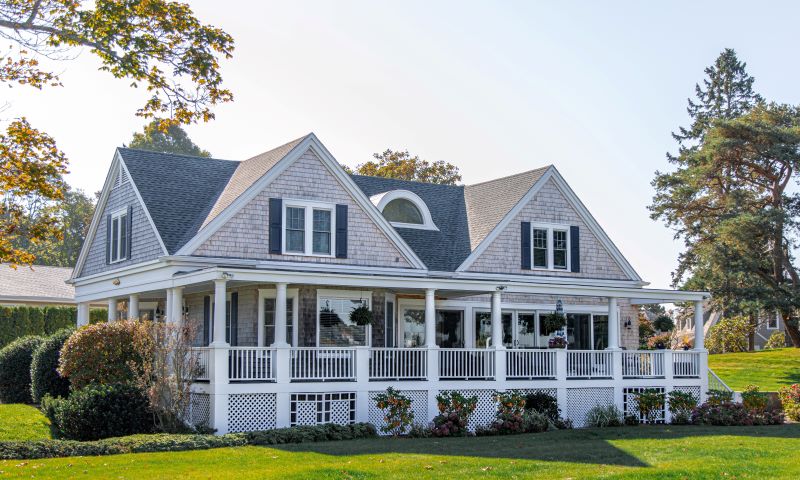Fire-proofing Your Home Landscape With Composted Mulch

by Craig Kolodge Ph.D. (aka Dr. K)
Fire-proofing your home landscape with compost and composted mulch is an important step that can help keep your home and yard safer during fire season. Continue reading to learn why you should use it in San Diego County.
Compost and Composted Mulch plays an important role in our San Diego area landscapes providing multiple benefits
- It conserves valuable water in the soil, saving money while reducing plant stress.
- It cools soil temperatures and minimizes the heat island effect.
- It reduces weeds and herbicide use and it makes weed removal easier.
- It controls soil erosion and dust.
- It enhances the landscape’s visual aesthetics.
- Compost and composted mulch acts like a sponge to hold water to resist fire.
In spite of these positive attributes, many mulches are combustible presenting a serious hazard to home landscapes in wildfire-prone areas. A combustible material is defined as one capable of igniting, burning and supporting combustion when subjected to fire or heat. This should be taken into consideration when planting near buildings.
Working compost into the soil when planting near a home or building is a safer option than applying bark and large wood chips around plants and shrubs. Using a composted mulch with a higher percentage of fines also retains more water than mulches with larger pieces of wood for fire-resistance.
Mulch Combustibility Field Evaluation
In 2008, the Carson City Fire Department, Nevada Tahoe Conservation District, University of Nevada and the University of California Cooperative Extension conducted a field evaluation on the combustibility of various landscape mulches. Mulch is defined as any material (organic or inorganic) used to cover soil surface for a variety of purposes.
In this study eight organic mulches were evaluated in terms of three combustion characteristics: flame height, rate of fire spread and temperature measured 4 inches and 16 inches above the mulch bed. The mulches evaluated were: Tahoe Chips (pine needles, wood chips, bark and other plant material) with and without fire retardant solution applied at 2-3 inch depth, Tahoe Chips without retardant (single 1 inch depth), Shredded Western Cedar (2-3 inch depth), Shredded Recycled Rubber (2-3 inch depth), Pine Needles (2-3 inch depth), Medium Pine Bark Nuggets (2-3 inch depth) and Composted Shredded Wood Chips (2-3 inch depth).
Each mulch treatment was replicated 3 times and allowed to settle for 79 days after installation. The plots were then ignited using a drip torch by the fire department on a hot (approx. 100 F), dry (13% RH) afternoon at the height of the fire season in northern Nevada. The Fire Rating System value for that day was “Extreme”. Fans were used to generate a mid-plot air flow of about 10-15mph.
Key Findings
All mulches were combustible under the test conditions but varied considerably in terms of the flame height and speed at which fire spread and bed temperature.
With the exception of the composted wood chips, all of the mulch treatments demonstrated active flaming combustion. The composted wood chips produced only incidental flaming with smoldering as the primary form of combustion. It should be noted that the composted wood chips out-performed the Tahoe chips treated with fire retardant.
Since only a single sourced composted wood chip was included in this field trial, it is not known if composted mulch from other sources would perform in a similar manner.
Conclusion: Composted wood chips demonstrated the least hazardous fire behavior overall of the eight mulch treatments tested and therefore would be the best choice for use in residential landscapes.
Note of Caution: All organics mulches tested are combustible and can potentially ignite wood siding, plant debris and other combustible materials in contact with or immediately adjacent to a mulch bed.
Resources and More Information
I recently provided tips and information to the Ramona Garden Club on using composted mulch to protect homes from wildfire. A key point that I shared is that compost screened to less than 1/2″ is a great option for fire suppression because it retains water (One cubic foot of compost can hold 4 gallons of water). Read about my presentation in the Ramona Sentinel article from September 15, 2021.
For a real-life example of how compost can reduce the chances of a fire on your property, read Biocycle’s article “Compost Use Conserves Water” by Nora Goldstein. You may also want to check out Cal Fire’s tips for “Fire Smart Landscaping“. Feel free to reach out to me with any questions.
The University of Nevada Cooperative Extension also has a good article on the subject, “The Combustibility of Landscape Mulches Publication”.
